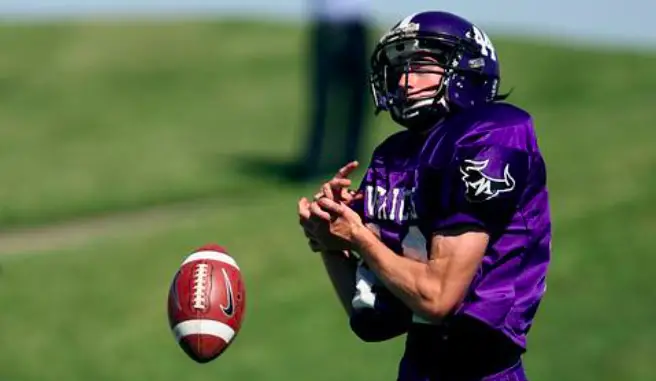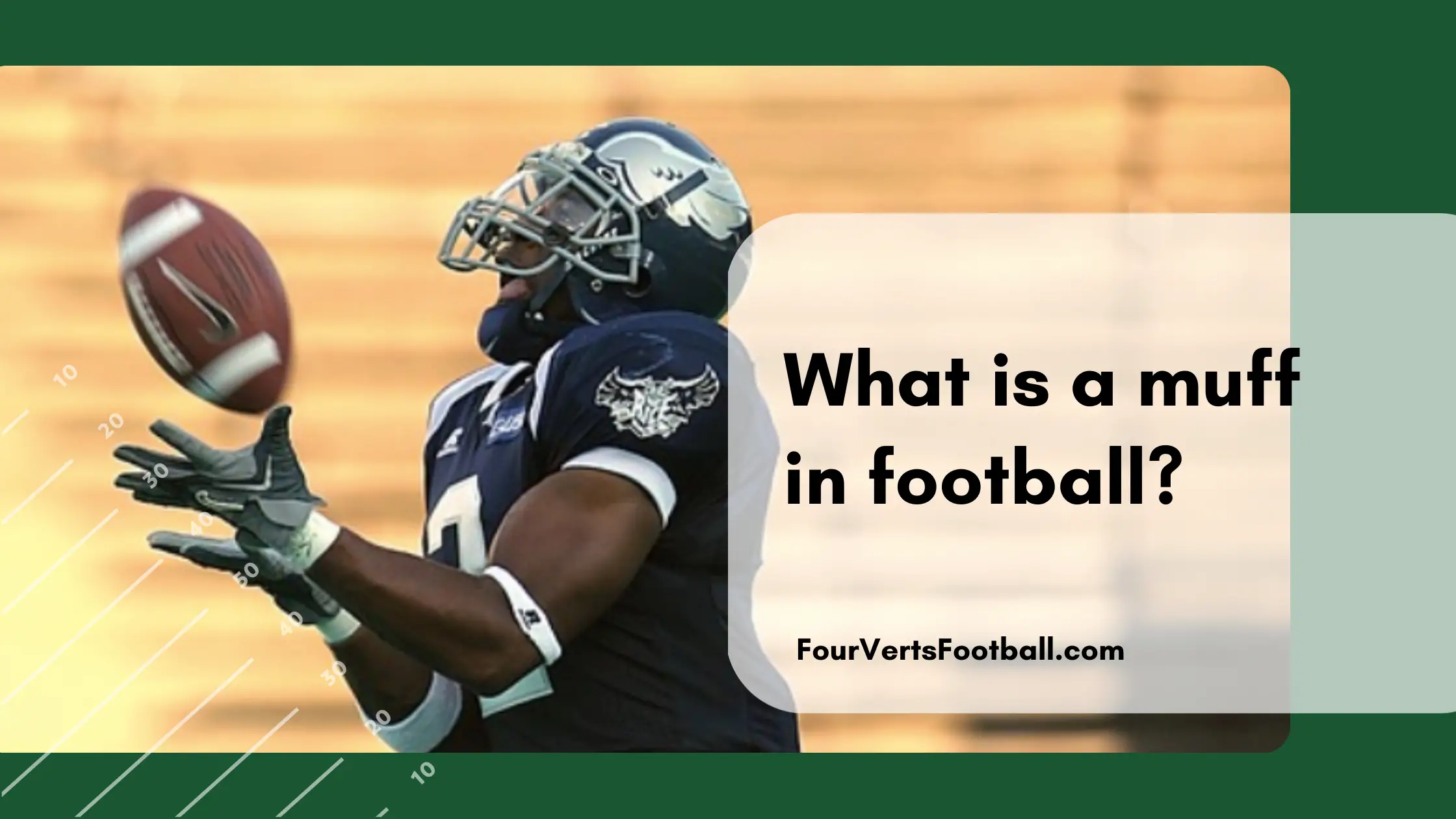A muff in football refers to a play in which a player touches a ball yet fails to gain possession resulting in a live ball that can be picked up by either team.
The term muff is used in situations in which a player does not have full possession of the football. It tends to be used when the dropped ball is live. This means plays like a dropped forward pass do not count as a muff.
Examples of a muff in football
The are two main occasions in which the term muff is used in American football. The most common situation by far occurs on punt returns.
Punt Returns
When the ball is punted the punt returner will attempt to catch the ball and move it down the field towards the opponent’s endzone.
During a punt return if any player on the receiving team touches the ball it then becomes a live ball. This means that either team can grab the ball and whoever is successful in getting the ball then assumes possession for the next drive.

When a punt returner attempts to catch the ball, touches it and fails to secure it this is a muff. This can also be referred to as a muffed punt.
Since the punt returner touched the ball and didn’t catch it, it is therefore a muff.
Kick Returns
Similar to a punt return a kick return is another play in which a dropped ball is a live ball. If a kick returner drops the kick resulting in a live ball on the field then he has “muffed it”.
Since the kick returner never had possession of the ball, yet also touched it and failed to catch it means that this play is a muff.
Muffed kick returns are far less common than a muffed punt yet they still happen from time to time. The reason muff kick returns are less common is because the kick returner usually has time to pick the ball up after the play.
This way a muff isn’t as dramatic as most kick returners pick the ball back up in the endzone and take a knee for the touchback.
What Is The Difference Between A Muff And A Fumble?
The difference between a muff and fumble is quite an easy distinction. In order for a play to be a fumble, the player must have previously had possession of the ball.
If a player simply touches the ball this is not the same as gaining possession. Similar to a player catching a forward pass he must possess the ball and make a football move in order for possession to be established.
That is why if a player catches a pass and then fumbles shortly thereafter he did not muff it. He caught the ball, established possession, and then fumbled the ball.
The easiest way to think of it is that muffing a ball has to do with a failure to gain possession. While a fumble refers to losing a ball after having possession of it.
Why Can’t A Muffed Punt Be Returned?
The reason that muff punts cannot be returned forward by the punt returners’ teammates is because of the holy roller rule.
Players in the NFL are not able to fumble forwards due to a game in which an intentional forward fumble changed the outcome of the game.
In dire situations, a punt returner may choose to intentionally muff a punt if he believes he is going to be tackled shortly after receiving the ball.
Intentionally creating a live ball on the field is not something that is allowed in football due to the holy roller rule.
This is because players would simply intentionally fumble forward each time they were going to be tackled if that tackle were to end the game.
Conclusion
I hope you have enjoyed our article on the term Muff in football.
Remember a muff in football occurs when a player touches a live ball but fails to secure it. Since forward passes are not live balls when dropped they are generally not considered to be muffs.
Instead, muffs typically occur on punt returns and kick returns.
If you want to learn more about football I encourage you to check out some more of our content. See our guides to how long a football game is or if there has ever been an ambidextrous qb.

